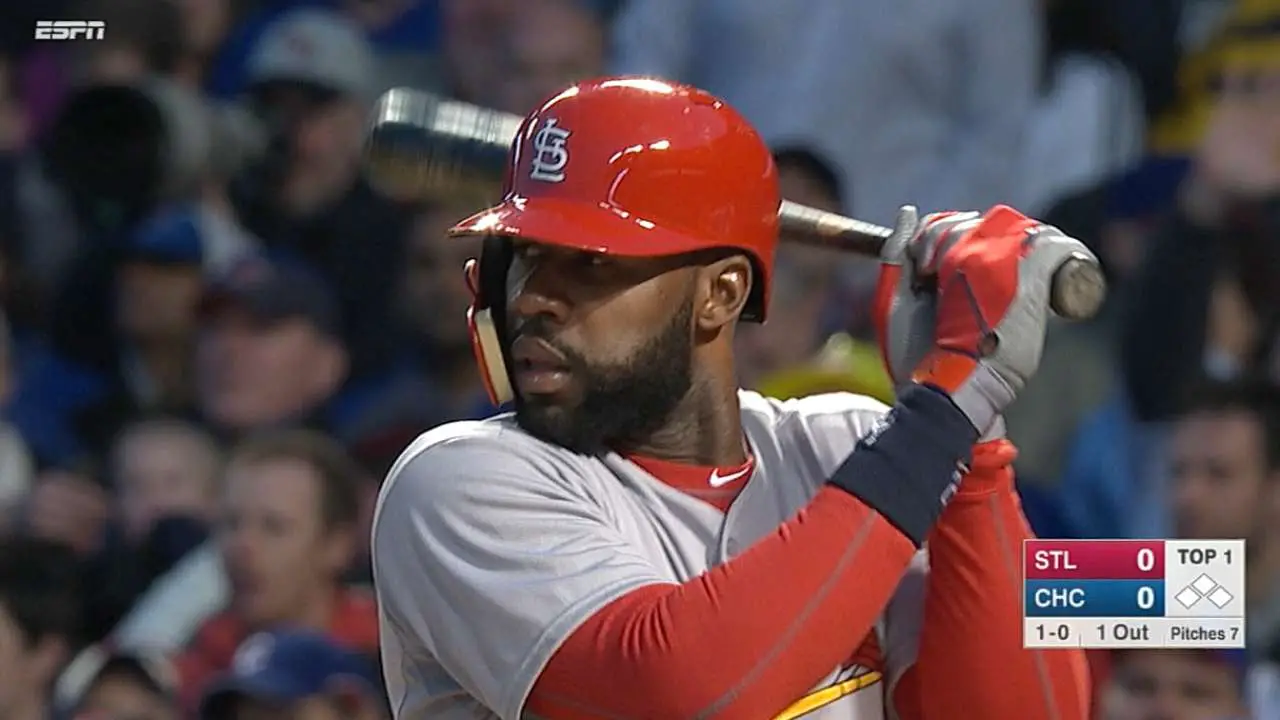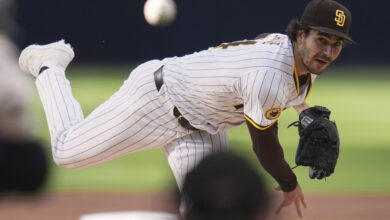
Given Their Financial Limitations, What Can the Cubs Really Afford Right Now?
Heading into the offseason, there was a lot of chatter about the Cubs’ pursuit of one or more really big-ticket additions. As all the biggest names sign all the biggest deals elsewhere though, that expectations have shifted a bit. Think about: their biggest get, really their only get outside of a few radar-blip pickups, has been John Lackey. In and of itself, signing the divisive starter was a move a lot of fans were against. But when sandwiched between David Price and Zack Greinke getting megadeals in Boston and Arizona and Jeff Samardzija going to San Francisco for $90 million, you had a perfect recipe for disappointment.
Not that I’m disappointed, mind you. I’ve not been shy about expressing my relief that the Cubs didn’t commit $30+ million per year to either of the top two starters. And while I believe getting away from Don Cooper on the South Side will do wonders for Shark, I would not have been comfortable with giving him $18 million/year for the next 5 years. That’s about $5 million or so more than the Cubs had offered him 18 months ago, when Samardzija was in the midst of an All-Star season. He wanted more, the Cubs traded him to Oakland, Bob’s your uncle, Fanny’s your aunt, everyone wins in the end.
Well, except for the A’s, who lost both their top prospect and the AL Wild Card last year. And the White Sox, who flipped a few players of their own to bring Shark back to Chicago, only to experience a season-long bed-soiling.
But Samardzija certainly came out on top, pulling down one year and about $20 million more than I’d have been comfortable offering. While I often give him grief for his errant tweets, Bruce Levine was right on with his call of $18M AAV as the going rate for the enigmatic pitcher. I think we all doubted the veracity of the purported nine-figure deal in the offing, so when Shark went back to the Bay for 5/$90M, Levine was proven correct.
That, not to mention the specificity of the numbers in this next bit, have me feeling that his info about the Cubs’ offer to Price is on the money as well.
Cubs offer to Price was creative at 7-$161 million third to Boston and St Louis .They liked Samardzija but did not offer 5 year deal .
— Bruce Levine (@MLBBruceLevine) December 6, 2015
This shows you just how serious the Red Sox were about landing the lefty, but it says a good deal more about exactly where the Cubs are. First, it’s clear they really had no intention of landing the former Ray/Tiger/Jay. I mean, $161 million is a lot of money, but they knew nothing that shy of $200 was even going to come close to getting it done. Second, it gives us an idea of how much they’ve got to spend.
“Obviously, it was a big contract,” Theo Epstein said of Price’s deal with Boston, “and they’re a little bit more fully developed and fully realized from a payroll standpoint now – and it’s a place we hope to be in several years. Right now, we just couldn’t compete at that level [all emphasis mine].”
Heading into the winter, it was speculated that the Cubs would be able to add somewhere in the neighborhood of $20-25 million to the payroll, which would have them at a total of right around $14o million. At $23 million AAV, the offer Levine reports above would have ostensibly sapped the entire budget. That’s why Levine’s use of “creative” is really important here. It’s reasonable to think that the Cubs had put together a heavily back-loaded deal that would start out low and escalate quickly in the last three to four years. That makes all kinds of sense when you figure that a 7-year contract would run through the 2022 season, which would allow for increased revenues from the new Cubs Network to offset its cost over the last few years.
Okay, where was I? Ah yes, the money they could add. While I don’t believe the Cubs planned to give Price a flat-out $23 million/year deal, we’re going to use that figure anyway because it gets us to that $140 million total payroll. I suppose I should take a moment to explain how we got there too, huh? Estimates had their obligations at about $117 million prior to the Lackey signing, so his $16 million puts the number at $133 million. You math majors out there have probably already discerned that we’re now talking about only $7 million or so remaining in the budget for 2016, a pretty depressing thought when the team still needs to add another starter and a center fielder. Or is it?
“We’ve been working with our business side on some ways to create a little bit more room for 2016 within the parameters that we have,” Theo Epstein said recently.
“It depends on some other things that take place,” the Cubs exec continued. “Sometimes, when you make a trade, it opens up the ability to then sign a free agent. Not all really good players are expensive, especially if you get them through trade and you can get creative [all emphasis mine] with how you structure certain deals.”
I know any one of us would be more than happy to a few million dollars to play baseball, but it’s gonna be really difficult to find even a mediocre player, let alone two, for scratch that amounts to less than half the qualifying offer amount. It’s still possible that Theo Epstein gets the green light to go big after Jason Heyward, whose youth and value might well dictate a 10-year deal into which a good deal of creativity could be structured. This looks a little crazy, and I know there’s a bit of levity here, but take a look at something Ryan Davis tweeted Sunday:
@DEvanAltman @MattSpiegel670 heyward 7 years, $184m breakdown:
$7m
$10m
$12m
$15m
$40m
$50m
$50m— Ryan Davis (@RyanQDavis) December 6, 2015
But what if we extend that out three more years and tack on $26 million? That’s a 10-year, $210 million deal that could look like this over successive years: $7M, $10M, $12M, $15M, [Cubs Network launches] $20M, $25M, $28M, $30M, $30M, $33M. I know the numbers look crazy toward the end, but it’s actually quite reasonable given the potential return you’d get on a player of Heyward’s caliber. Whether the Cubs really can get that creative and whether Heyward would take it knowing that he’s going to have to play CF for at least one season remains to be seen.
So that sounds pretty cool and fun. It also means burning up the last of the (estimated) budget for this season, which leaves the Cubs finding a way to pick up a starter at a cost of little more than pocket change. But that’s assuming they don’t make any moves to free up money elsewhere. Jason Hammel’s seems like a good salary to jettison, but would Epstein really thin out a unit he’s trying to deepen, particularly when it’s a guy who seems to have such a strong bond with the team? If it was just a pure salary dump, it almost wouldn’t matter what came back in return, but would the Cubs really be able to get a cheap, viable starter in return for Hammel? Maybe there’s another Jake Arrieta out there.
Listen, I don’t want to devolve into trade speculation here, but I do think the salary figures are pointing to the inevitability of a trade this offseason. If the Cubs sign a center fielder, they’re almost certainly going to need to trade for another pitcher. Likewise, signing another starter means trading for an outfielder. Epstein addressed a bit of that balancing act as well.
“I don’t feel like if we do something on the pitching end, we won’t be able to do anything with position players,” he explained. “It just depends on exactly the type of commitments you’re looking at, and how they’re structured.”
But what about the news of Javy Baez playing CF this winter and spring? That’s all well and good and I really think Javy can readjust to the outfield (played there in high school), but giving him a significant amount of run out there runs contrary to the stated desire to improve outfield defense. Then again, it may not matter if Javy ends up getting traded.
I could probably go on forever giving a lame point/counter-point on the team’s various needs and how they might best address them, but I think it’d be better to wrap this up. Given that the Cubs have already spent on one starter, I think they will look to sign an outfielder and trade for another pitcher. Oh, and I didn’t even get into the rumors that they are in pursuit of a top-tier closer. And then there’s the debate over Miguel Montero’s value as a catcher relative to $14 million he’ll pull down each of the next two seasons.
Such deals would obviously alter the landscape of the team and its payroll, thus making it (more) possible to address the other needs I’ve spent the last several hundred words discussing. The long and short of it is that we’re nearing the point at which the Cubs are really going to start making things happen and I think we’re going to see some popular names involved. That cuts both directions, as the Cubs will have to move some current players in order to bring in the guys they think can get them to that next level. Things are about to get really crazy.

